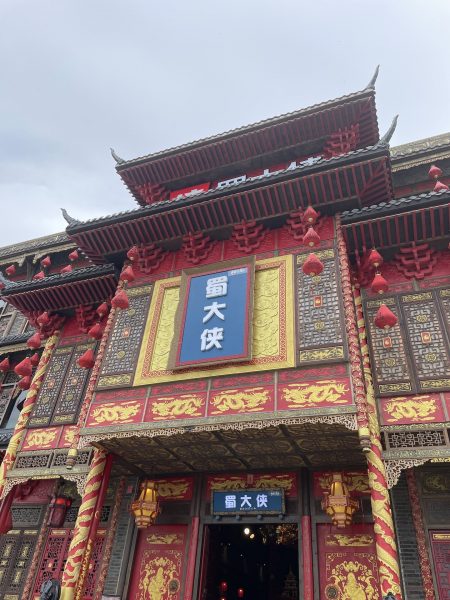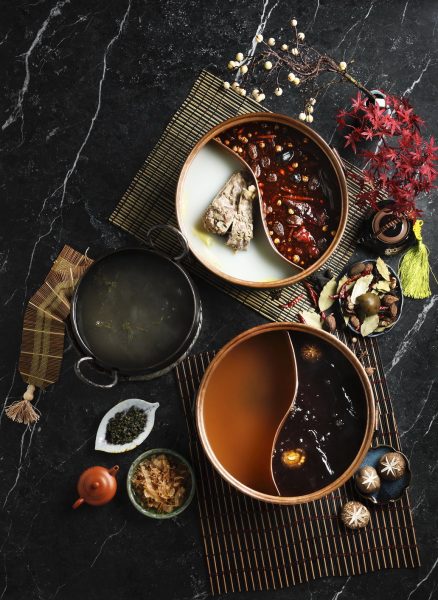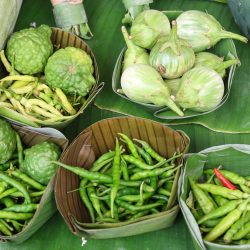In Love with Spice: Thailand’s Fiery Affair with Mala Hotpot

Even as Thai cuisine is making its mark worldwide, with many dishes earning titles like “world’s best”, local Thais, especially the younger generation, have developed a fondness for Sichuan cuisine’s hotpot, known as mala. The proliferation of mala hotpot restaurants has been nothing short of phenomenal, to the extent that enjoying a mala meal has become commonplace among the younger crowd.
“Mala hotpot” has also become a hot trend among restaurant entrepreneurs. Over a 12-day period – from August 31 to September 11 – data from Facebook, YouTube, Instagram, and Twitter show that 11 new mala restaurants opened in Bangkok alone, averaging almost one new restaurant per day.

The data on newly-opened mala restaurants have been collected by the social listening platform DXT360. The platform also found social media’s most-mentioned term on the topic “mala” is “mala hotpot”, followed by “craving mala” and, in third place, “mala hotpot buffet.” People on social media, it seems, are most interested in mala hotpot or mala hotpot buffet.
The name “ma la” translates as “numbing and spicy,” and it refers to the unique combination of spices and ingredients used in the dish. It may refer to the famed Sichuan pepper. The mala flavour has been around since 2018. The trend started in a big way with Hai Di Lao, a well-known chain from China, opening branches in Thailand.
Within days, long queues were forming at every branch. That response paved the way to mala becoming a prominent ingredient in Thai people’s meals and since then, new mala hotpot restaurants have also joined the market.
Over the past year, wherever you looked, you would see mala hotpot. Vacant retail space at many shopping malls has been taken up with this kind of hotpot restaurant. And plenty of shophouses have been turned into a mala chain.

The pioneer of this trend in Bangkok is Suki Jinda, a mala hotpot restaurant that added a twist by offering affordable individual hotpots, with prices ranging from 5 to 50 baht per item. Many people were willing to wait in line for an hour to experience it.
“I think a Chinese TV series is one of the reasons. Its popularity makes it so tempting to give mala a try. Why is there always mala suki in the story? Some people try it and love it, and they start checking out new mala restaurants to find their favourites,” said Stamp Mee, a young Thai fan of mala hotpot and the Chinese series.
Another Thai fan of the hotpot Warunee Maneekum said she was drawn to the dish because she was a food enthusiast, especially when it comes to spicy and flavorful dishes, particularly those from the southern region of Thailand.
“When I first tried mala hotpot in Thailand, I didn’t immediately fall in love with it. However, I eventually discovered an authentic restaurant that prepared mala hotpot according to the original recipe, and that’s when I became infatuated with it. The combination of spiciness, fragrant aromas, and the unique tongue-numbing sensation of mala and the hotpot made me feel like I was indulging in a healthy meal,” she added.
In a mala hotpot, a pot of simmering broth is typically divided into sections. The pot is placed in the centre of the table and diners cook a variety of thinly sliced meats, vegetables, tofu, and other ingredients in the bubbling broth. The spicy side of the pot is flavoured with ingredients like Sichuan peppercorns, chilli peppers, and various spices, which create the characteristic numbing and spicy sensation.
Is the taste of Thai version of mala hotpot different from the Sichuan original? Joy Zhu, a Chinese post-graduate student in Bangkok, said that the mala taste in Thailand was not as spicy and hot as the original. She added that the dish was a firm favourite in Sichuan but its popularity might differ in other areas because not every Chinese person loves spicy food.
“I also have mala hotpot in Thailand and I don’t care if it comes from a chain restaurant from China or is made locally. The popularity of mala hotpot is great for all Chinese in Thailand as we can enjoy the familiar tastes,” said Zhu who has been in Thailand for a few years.
Though Thai food is also spicy, Joe Han – another student from China – said the spiciness is not the same as Thai people use chillis directly while the spicy and hot taste of Chinese dishes will have gone through many processes. The depth of the taste of mala is different. “A Thai spicy dish has three flavours – spicy, sour and sweet – but the Chinese don’t like the sour taste.
In addition to the mala restaurant trend, many existing restaurants have started offering mala hotpot buffet options too, with prices ranging on average from 159 to 599 baht. The popular suki chains have added the dish. But the mala addition has also spread to other food. A famous pizza chain has also introduced the mala flavours and it seems all the snacks and finger food popular among youngsters have jumped on the mala bandwagon.

The data suggest that this is no fad and the trend will continue for quite some time. According to the DXT360 platform, food types that people instantly think of when deciding where to dine are hotpot, suki, and grilled skewers. That hasn’t changed with the advent of mala. Now “mala hotpot” is the most talked-about, accounting for 46%, followed by “mala suki” at 37% and “mala grilled skewers” at 17%.
“Not only is the taste right for me, but it also has something that satisfies me as a loyal fan of my favourite Chinese actor,” said Mee.
By Veena Thoopkrajae






